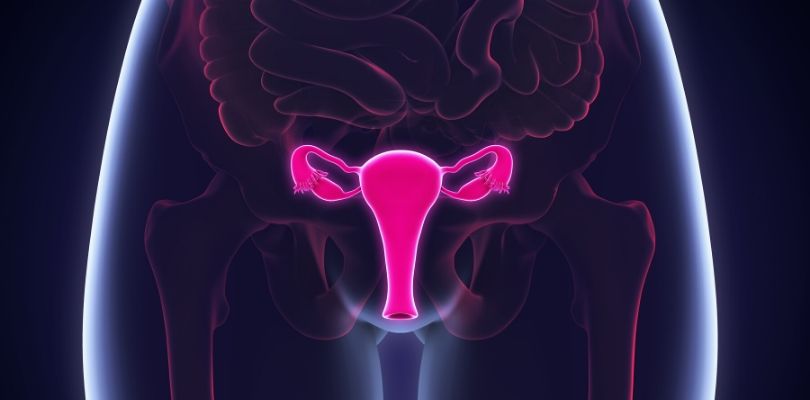Can A Cyst Be Cancerous?
New lumps on the skin can be worrisome. Your first thought might be “cancer” – but it could be just a benign cyst. Even doctors often don’t know without performing certain tests.
Let’s look at the signs that can help identify whether a lump is probably a cyst or a tumor. But even with that, it’s always best to consult your doctor.
By taking a small sample of the lump, they can determine exactly whether it’s a cyst or a tumor and advise you on the best treatment. The good news is most of the time those lumps are harmless.
What Are Cysts and Tumors?
Cysts and tumors are two types of lumps. A cyst is a small sac that is typically filled with fluid or air. A tumor is filled with tissue. Both cysts and tumors can develop under your skin, or in tissue, organs, and bones.
When they see a new lump, most people immediately think of cancer. It’s true that certain types of cancer can cause cysts. However, cysts by themselves are typically benign.
Tumors can be either malignant or benign. A benign tumor will generally stay in one place. When tumors are malignant they grow and possibly spread to other parts of the body.
What Causes Cysts?
There are many types of cysts with various causes. An underlying medical condition such as polycystic ovary syndrome can cause internal cysts. Cysts can also form on your skin’s surface. Other causes of cysts include:
- Clogged duct in a hair follicle
- Irritation or injury to a hair follicle
- Degeneration of connective joint tissue
- Ovulation
What Causes Tumors?
Tumors are caused by abnormal cell growth. They occur when old damaged cells survive instead of dying, and when new cells start to reproduce abnormally.
If the tumor is benign, it will not spread. If it is malignant (cancerous), the tumor can spread to nearby tissue – and eventually, cancer cells can travel throughout the body, causing new tumors.
Where Do Cysts Typically Appear?
Cysts (and tumors) can commonly appear on (or in) the skin, the armpit, and chin.
Cysts Can Appear on or in the Skin
Skin cysts and tumors are skin problems that can be painful. Skin cysts are non-cancerous pockets that are filled with fluid or other material. They will feel like smooth, small peas beneath the skin’s surface. They will roll under the skin when you apply pressure. Looking closely, you will see a small pore.
Skin tumors are abnormal growths that can be malignant (cancerous) or benign (harmless). These are very common in older people.
Some common benign tumors include:
- Warts (skin tumor caused by a virus)
- Seborrheic keratoses (skin growth ranging from light to dark brown)
- Nevi (moles or birthmarks)
- Dermatofibromas (scar tissue from a bug bite or acne lesion)
- Lipomas (normal fat in an abnormal location, often from a traumatic injury)
Clogging of sebaceous glands and infection are two causes of skin cysts. These cysts may require treatment that involves lancing the cyst and draining it. An injection of cortisone is sometimes necessary.
When cysts don’t respond to treatment, they can be surgically removed – especially necessary if they become infected or grow.
Determining which types of cancer are the biggest dangers for you will depend on where you live, your gender, your age and your individual habits.
Armpit Lump: A Cyst or Not?
An armpit lump is an enlarged lymph node under your arm. Lymph nodes are small glands that are important to the body’s immune system.
An armpit lump may feel small or may be extremely noticeable. Armpit lumps can be caused by cysts, infection, shaving irritation or a reaction to antiperspirant. In some cases, these lumps can be symptoms of a serious underlying medical problem.
See your doctor right away if you notice an armpit lump that becomes enlarged, isn’t painful, or doesn’t go away.
Chin Lump: Can Cysts Cause Lumps on the Chin?
A lump under the chin is usually harmless. They are typically caused by swollen lymph nodes triggered by an infection. However, cysts, abscesses, benign tumors, cancer, and other medical issues can also cause chin lumps.
A lump under the chin may feel soft or hard. The lump may be tender or painful to the touch. When a neck lump doesn't cause pain, it can be present for a long time before you notice it.
How Are Cysts and Tumors Diagnosed?
In most cases, it’s difficult to look at a lump and see the difference between a cyst and a tumor.
Cysts that look smooth are almost always benign. If the lump has solid components, due to tissue rather than liquid or air, it could be either benign or malignant.
Your doctor might recognize a cyst during a physical exam. However, diagnostic imaging is typically needed for an accurate diagnosis – ultrasound, CT scan, MRI scan, and mammogram.
A tumor can grow large enough that it puts pressure on surrounding tissues. The tumor’s location can cause symptoms such as difficulty eating, breathing, moving your joints, or controlling your bladder. Contact your doctor right away if you notice a lump, especially if you have unusual symptoms – even if the symptoms don’t seem related to the lump.
Only a biopsy will determine whether a cyst or tumor is cancerous. The doctor will surgically remove some or all of the lump. The tissue will be examined for cancer cells.
If the lump is filled with fluid, your doctor might perform a procedure called fine needle aspiration – inserting a long, thin needle into the lump to obtain a sample of the fluid.
Most biopsies and aspirations are performed in an outpatient center.
How Are Cysts and Tumors Treated?
Treatment for cysts and tumors will depend on their cause, whether they're cancerous, and where they are located. Most cysts don't require treatment. Your doctor can remove the cyst or drain the fluid. The cyst may regrow and will require removal.
Benign tumors also usually don't need treatment. If the tumor is causing problems, you may need surgery to remove it.
Cancerous tumors almost always require treatment with surgical removal, radiation therapy, or chemotherapy. In some cases, you may need a combination of these treatments.
Warning Signs
Let your doctor know immediately if you notice any of these changes in a lump:
- Looks red or swollen
- Bleeds or oozes
- Grows quickly
- Changes in color
- Itches
- Ruptures
As with any medical condition, the earlier it is diagnosed, the greater your chances of successful treatment.







